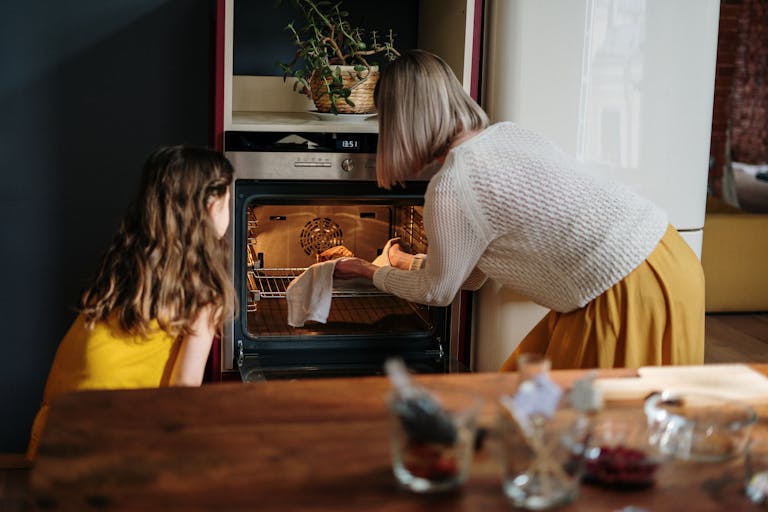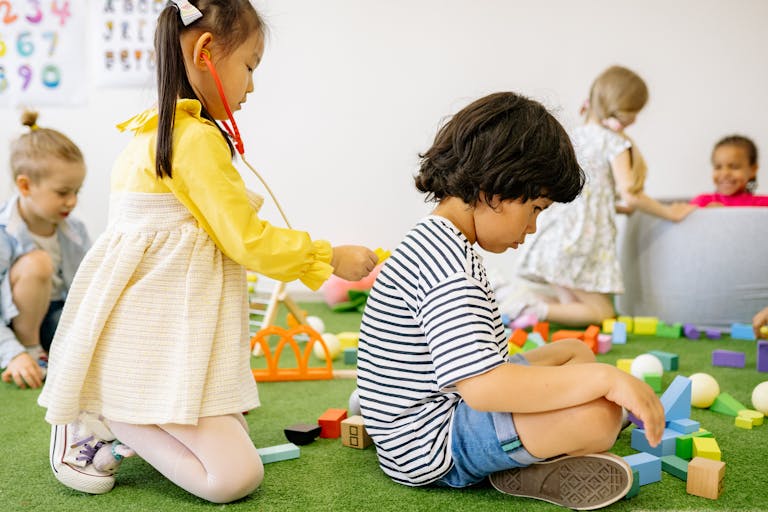4 Easy Homemade Sensory Dough Recipes for Fun and Learning
Homemade sensory dough isn’t just fun, it’s also great for kids’ development. This hands-on activity helps with motor skills, creativity, and focus. Plus, making it at home is easy and lets you customize everything, from texture to scent.
Explore more way to foster creativity in preschool.
Table of Contents
Understanding the Benefits of Sensory Dough
Playing with homemade sensory dough isn’t just a fun activity, it’s a cornerstone of meaningful childhood development. This section explores what makes sensory dough unique and why it holds such value in the world of sensory play.

What is Sensory Dough?
Homemade Sensory dough, often seen as a variation of playdough, is a malleable material designed to stimulate kids’ senses. Its soft, squishy texture invites touch, while the addition of scents, colors, or textures enhances the overall experience. Whether a child is rolling it, flattening it, or shaping it, homemade sensory dough transforms simple play into a richer, more engaging activity.
What makes it special is its ability to spark curiosity. Kids are drawn to experiment, squishing, stretching, and even squeezing it. Each interaction promotes exploration through hands-on learning. If you’re familiar with simple materials like flour, cornstarch, and food coloring, you already have an idea of what goes into this flexible medium.
Benefits of Sensory Play
Play with homemade sensory dough isn’t just about fun, it’s loaded with developmental benefits that provide real-world advantages.
- Cognitive Development
Handling sensory dough helps children sharpen problem-solving skills. They might wonder, “What happens if I flatten it?” or “How do I mold a ball from this?” Plus, as they explore and experiment, they’re building neural connections in their brain. - Emotional Benefits
Ever noticed how squeezing something soft feels soothing? Sensory dough provides a calming outlet for emotional stress. For kids, it’s a low-pressure way to express themselves, particularly when words fail. - Physical Development
Playing with dough encourages fine motor skill growth. Activities such as pinching, rolling, or poking strengthen small hand muscles, vital for tasks like handwriting or tying shoelaces.
Sensory activities like sculpting with playdough not only captivate young minds but also support essential development. According to the National Association for the Education of Young Children (NAEYC), playdough encourages creativity, fine motor skills, and problem-solving.
Beyond building skills, homemade sensory dough fosters creativity and imagination—key ingredients in raising confident children who think outside the box. By incorporating sensory play into a daily routine, you’re blending fun with purposeful learning.
Essential Ingredients for Homemade Sensory Dough
Creating homemade sensory dough at home offers endless possibilities for customization, play, and creativity. The ingredients you choose can dramatically change the texture, scent, and color, making the experience tailored to your child’s needs and preferences. Whether you’re sticking to traditional recipes or exploring new options, having the right ingredients is key.

Flour-Based Recipes
Classic homemade sensory dough recipes usually begin with all-purpose flour as their foundation. It’s affordable, easy to find, and creates a smooth and pliable texture kids love. Mixing it with water, salt, and a touch of oil gives you a reliable, non-sticky dough. Adding cream of tartar can ensure the dough stays fresh longer by preventing stickiness.
For those looking to add variety to basic flour-based recipes, here are some enhancements:
- Scents: Include vanilla extract or essential oils for calming aromas.
- Colors: Food coloring or natural dyes like turmeric or beet juice add visual excitement.
- Textures: Sprinkle fine glitter or small beads for a unique sensory touch.
Alternative Ingredients
Need to avoid gluten in your homemade sensory dough? Thankfully, there are plenty of great substitutes that still provide an engaging sensory experience. Gluten-free options often require alternative flours and binders to mimic the elasticity of traditional dough.
Here are some popular gluten-free ingredients:
- Rice Flour: Creates a smooth, moldable dough without gluten.
- Cornstarch: Perfect for a silky texture, though it can crumble more easily.
- Tapioca Flour: Adds elasticity—great for stretches and pulls.
Additives and Enhancements
Elevating homemade sensory dough from plain to extraordinary is all about the extras. Think of these as the “seasoning” for your dough—each choice adds a new layer of sensory engagement.
- Textures: Consider crushed cereals, sand, or small seeds for a tactile element.
- Scents: Essential oils like lavender and eucalyptus can create calming sensory experiences, while mint or citrus offers invigorating, fresh smells.
- Colors: Use non-toxic kids’ paint or natural food powders like spirulina or freeze-dried fruit powder.
Including these elements can make the homemade sensory dough multi-sensory. For instance, scents combined with textures stimulate not just touch but also smell, creating an immersive experience.
Homemade sensory dough is as much about creativity as it is about play, so don’t be afraid to experiment with what you have at home! Your options are nearly limitless. For more homemade sensory dough recipes, stay tuned!
Popular Homemade Sensory Dough Recipes
Homemade sensory dough opens up a world of creativity for parents and kids alike. You can customize it for texture, color, and scent, making each experience unique. Plus, the recipes are straightforward, using simple, everyday ingredients. Here’s how you can get started with some of the best recipes around!

Classic Dough Recipe
The original homemade sensory dough recipe remains a favorite. It’s soft, easy to knead, and can last for weeks when stored properly.
Ingredients:
- 2 cups all-purpose flour
- ¾ cup salt
- 4 teaspoons cream of tartar
- 2 cups lukewarm water
- 2 tablespoons vegetable oil (or any neutral oil)
- Food coloring (optional)
Instructions:
- In a medium-sized pot, combine the flour, salt, and cream of tartar.
- Gradually add water, oil, and food coloring (if desired), stirring as you go.
- Cook over medium heat, stirring constantly until the dough forms a ball.
- Once it cools, knead until the texture becomes smooth and pliable.
This recipe is reliable and allows for endless customization.
Cloud Dough
Cloud dough is another dough that gets its name from its super soft, fluffy texture. It’s a sensory experience your kids will love, and it only takes two ingredients!
Ingredients:
- 2 cups cornstarch
- 1 cup conditioner (choose a fragrant one for added sensory fun)
Instructions:
- Pour the cornstarch into a large bowl.
- Slowly add the conditioner, mixing with your hands until it reaches a play-dough consistency. If it’s too sticky, sprinkle in more cornstarch.
The result? A soft, squishy dough that feels like a dream. Read more about it here.
Calming No-Cook Dough
For a relaxing twist, try this no-cook dough infused with essential oils. Lavender or chamomile scents work wonders for soothing kids (and parents too!).
Ingredients:
- 1 cup flour
- ½ cup salt
- 2 tablespoons cream of tartar
- ½ cup hot water
- 1 tablespoon vegetable oil
- 3-4 drops of your favorite essential oil
Instructions:
- Mix the flour, salt, and cream of tartar in a bowl.
- Gradually stir in hot water and oil.
- Add a few drops of essential oil for a calming touch.
- Knead until smooth and ready to play.
This recipe skips the stovetop, making it quick and hassle-free.
2-Ingredient Silky-Smooth Dough
For a quick fix with minimal ingredients, this 2-ingredient dough is silky, stretchy, and perfect for busy days.
Ingredients:
- 1 cup cornstarch
- 1 cup hair conditioner
Instructions:
- Combine the cornstarch and conditioner in a bowl.
- Mix with your hands until it forms a smooth dough.
- Adjust the texture by adding more cornstarch for firmness or conditioner for softness.
This quick recipe is ideal when you’re short on time but still want a memorable sensory activity.
Sensory dough recipes let you explore textures, scents, and colors in creative and engaging ways. Experiment with these ideas and make playtime unforgettable!
Creative Ways to Use Sensory Dough
Homemade sensory dough opens up a world of fun and learning for kids. It’s more than just play—it’s a hands-on way for kids to engage their creativity while exploring textures, colors, and smells. Here are some inspiring and practical ideas for making sensory dough activities a part of your play routine.
Sensory Bins
Sensory bins bring the magic of sensory dough into a contained space, offering endless possibilities for exploration. Start with a shallow container and add a lump of sensory dough as the star of the show. Surround it with complementary items for extra flair, like small toys, dried pasta, or even natural elements like rocks and leaves.
Here are some fun combinations:
- Beach Theme: Include sandy-colored dough, miniature seashells, and toy crabs for a seaside adventure.
- Dinosaur Dig: Create a prehistoric world by pairing earthy dough with small dinosaur figurines and “fossil” stones.
- Construction Zone: Use gray dough with toy trucks and pebbles for a tactile building site.
Sensory bins work well for individual play but can also encourage teamwork with siblings or friends.
Themed Play Activities
Themes make sensory dough play even more engaging. Tailoring activities around holidays or seasons sparks kids’ imaginations while keeping playtime fresh. You can build these themes into everyday learning or special celebrations.
Some popular ideas:
- Seasonal Fun: For fall, use orange dough with fake leaves and acorns. In winter, add cotton balls and glittery blue dough for a frosty snow theme.
- Holidays: Use red and green dough at Christmas with candy cane molds. Around Halloween, make black dough and add toy bats or pumpkins.
- Travel Adventures: Create landmarks like pyramids or castles with brown or sand-colored dough.
Themed sensory play takes abstract ideas and makes them tangible, helping kids connect with what they’re learning.
Teaching Concepts with Dough
Sensory dough isn’t just for fun—it’s an effective learning tool! From early math to literacy, dough helps children visualize and interact with abstract concepts. By molding, pressing, and shaping, kids absorb lessons without even realizing it.
Here’s how you can incorporate learning:
- Shapes: Roll the dough flat and use cookie cutters to cut out circles, squares, and triangles.
- Colors: Provide multiple dough colors and ask kids to sort items like beads or buttons into matching colors.
- Counting: Roll small balls of dough and have your child group them into numbered piles.
For educators or homeschooling parents, sensory dough provides an engaging way to blend tactile play with academic goals.
Sensory dough is more than an activity; it’s a canvas for creativity, discovery, and learning. With these ideas, you can transform a simple mixture into a gateway for imaginative play and meaningful education.
What We Know!
Homemade sensory dough is a win for parents and kids alike, fun, affordable, and packed with developmental benefits. From improving motor skills to fostering creativity, these simple recipes provide endless opportunities for play and learning.








2 Comments
Comments are closed.